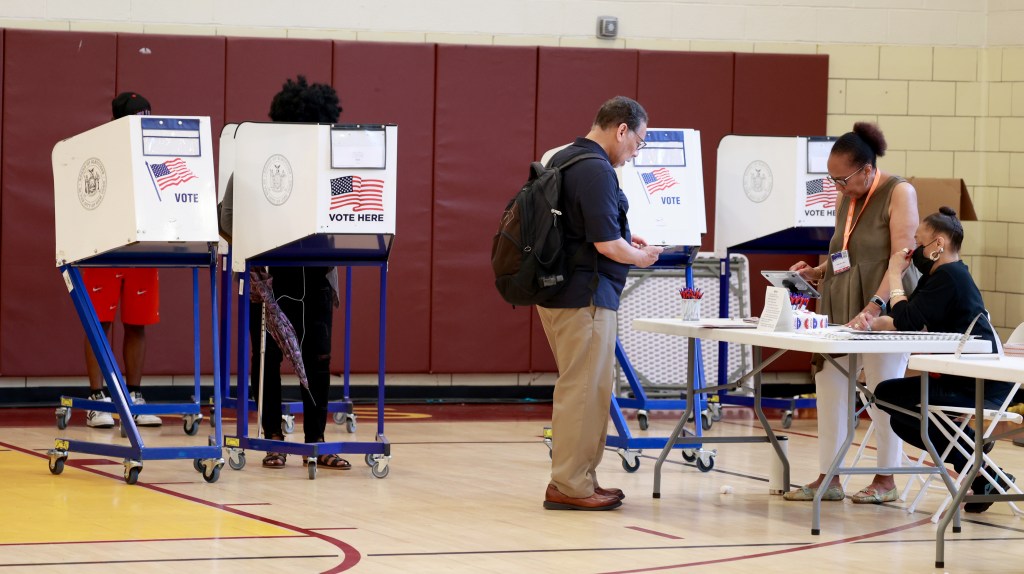The city’s outdoor public pools are closed for the season, but into the 2025 mayoral campaign pool state Sen. Jessica Ramos has just jumped, joining city Comptroller Brad Lander and (maybe) state Sen. Zellnor Myrie and (maybe) former Comptroller Scott Stringer and (maybe) Assemblyman and Democratic Socialists of America stalwart Zohran Mamdani.
They all want to replace Mayor Adams and the democratic free-for-all is very good for voters. Far too many times in the past, credible challengers have held back from taking on incumbent mayors because they judged the uphill climb to be dangerously steep.
The difference this year is ranked-choice voting, which had a rocky premiere in the 2021 mayoral election cycle, where Adams prevailed over the field. Voters can go to the polls (or vote by mail) and put their picks in order from first to last without pitting first, second and third choices against one another in a zero-sum fashion.
The ranked system means that Ramos and Lander and Myrie and Stringer and five or 10 others can get into the Democratic primary without fragmenting the competition and effectively consigning themselves to defeat.
That said, it’s hard not to notice that to a person, all these contenders are to Adams’ left. They tend to want higher taxes and more spending in what is already a high-tax, big-budget city, and on policing, they’re generally closer to zealous critic Maya Wiley than primary runner-up, Kathryn Garcia.
As long as pols are joining the fray, we’d like to see some real ideological diversity — and some people who foreground not their ideology, but their management chops. This is, after all, one of the world’s toughest executive jobs.
Which gets us to a big weakness in the way ranked-choice voting works in New York City: It’s only a primary thing. That means that Democrats (and Republicans, if there’s a contest on that side) each pick one candidate in a low-turnout summer contest, then the finalists meet in a fall general election that works the old way, one against one. That gives an unfair glidepath to the November election to a Republican, despite Republicans being a huge minority of New York City voters. And it effectively freezes out independent candidates and voters.
Growing numbers of the city’s registered voters aren’t enrolled in a political party. Citywide, there are now about half as many “blanks,” as they’re listed in Board of Elections records, as there are registered Democrats, and blanks outnumber Republicans.
Yet the only way for an independent candidate to have a real shot at becoming mayor is for him or her to win a spot on that zero-sum, first-past-the-post general election ballot, and to get more first-place votes than the Democrat in a D-dominated city. Billionaires can pull off that trick, but few others can.
Those who care about genuine democracy in municipal elections should be pushing hard for a system like Final Five Voting, in which everyone piles into a first-round, ranked-choice election regardless of primary affiliation, and then the top vote-getters move onto a ranked-choice general election.
Honor the voters. Give a wider range of candidates a chance. Repair our elections.
